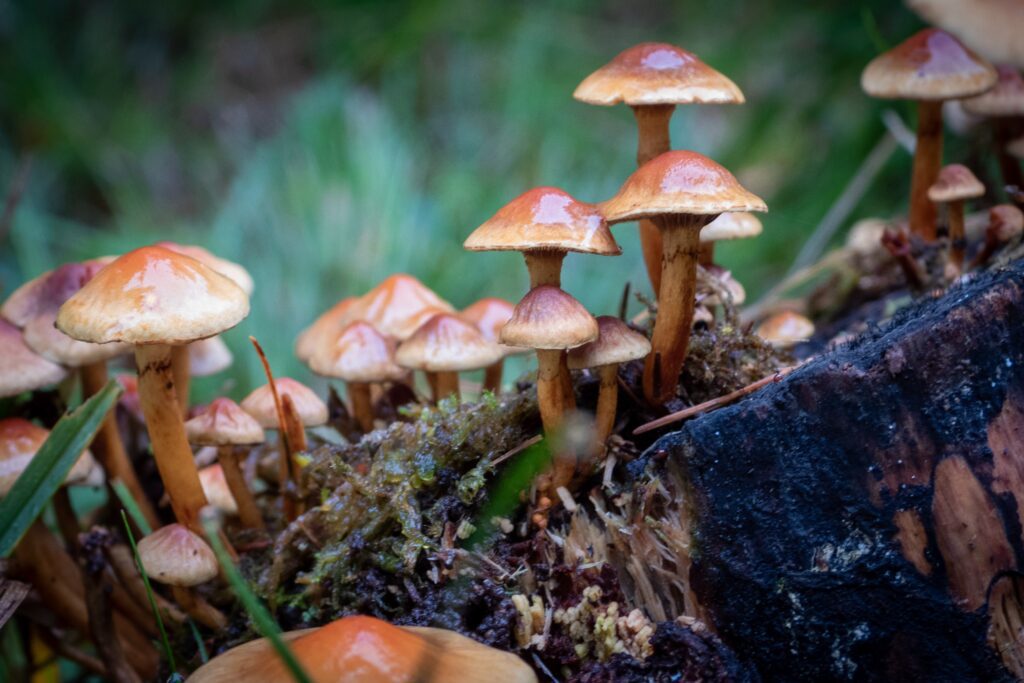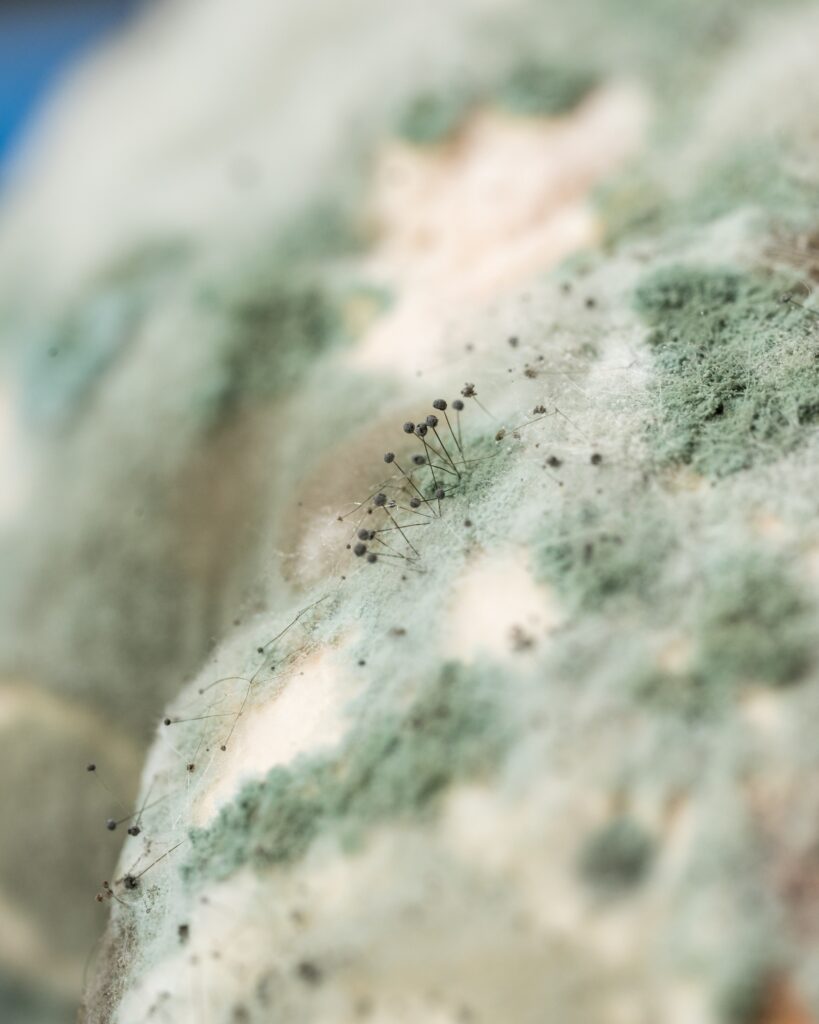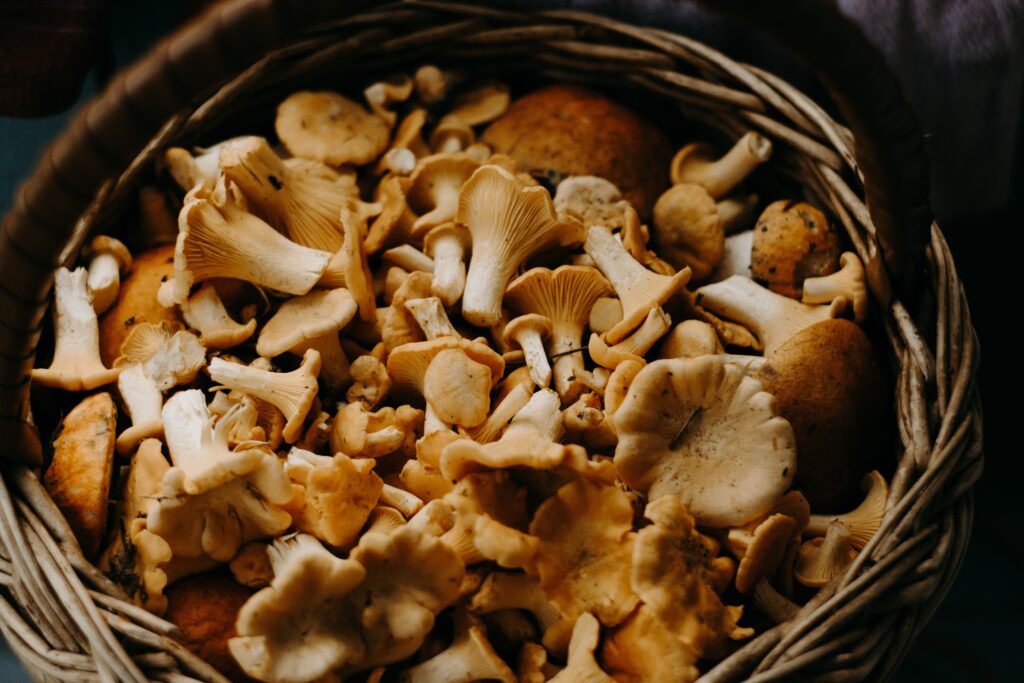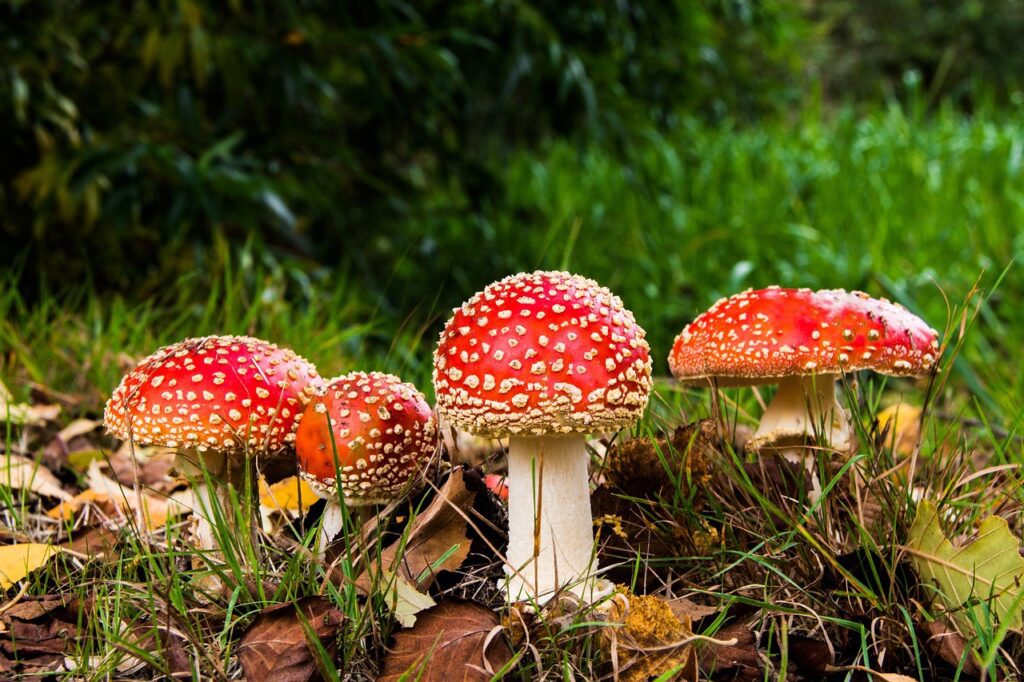Fungus – a group of organisms and micro-organisms that includes mushrooms, yeasts and moulds. The biological study of fungi is called Mycology. Although it was once classified under the category of botany, fungi are now known to be more closely related to animals than plants. The perception of fungi as more plant than animal-like persists given that like plants they are often in soil, form fruit-like structures ( like mushrooms), and some mould even look like plants.

The bottom line is that while they may share some similarities in looks, behaviours, biochemistry and genetics with other living organisms, fungi are identified as a separate and distinctive group.
The varied nature and number of fungi
The fungus kingdom is very diverse. It includes different ecologies, life cycle strategies, and appearances. Some fungi are unicellular organisms, while others are large mushrooms.
While we do not know exactly how many different types of fungal organisms there are, estimates say there could be anywhere from 2 million to 3.5 million species. Out of this vast estimated total number of fungi, only around 140,000 have been described in detail. And out of those, there are over 8,000 species that can be harmful to plants and a further 300 types that can potentially cause diseases in humans.
How they grow
They eat by secreting digestive enzymes into the environment and then absorbing dissolved molecules of food into their cells. Fungi move around by growing and/or releasing spores into water or air to extend their reach across and into other environments.
The majority of fungi grow in the form of hyphae–these are long, very thin structures that measure that can be several centimetres in length. Hyphae grow from their tips (apices). New hyphae are typically formed when new tips appear along existing hyphae. Over time an interconnected network of hyphae develops, which is called a mycelium. This is the stage at which you start to see the fungus with the naked eye – like those that we see on bread, other spiled food or on damp walls.

Different types form different patterns and colours as they grow and these can be used to help to identify what they are. They are highly adaptable and can use a wide range of substances to grow. This is a factor that also translates into their resistance to being destroyed.
Environmental conditions can work to stimulate a genetic program to start to reproduce which then accelerates when spores are widely dispersed.
What is their role in the environment?
As a group, fungi are key players (alongside bacteria) in the decomposition process of organic matter in many ecological systems.
Where do fungi occur?
They occur almost everywhere on earth, yet they tend to go unnoticed due to their tiny sizes and lack of colour. They live mainly hidden in soils or decaying plant life.
Fungi include species that live on or in plants, animals, or other fungi where they share a mutually beneficial relationship. Others just exist together without benefit or harm, and then others are harmful to plants, people or animals.
Fungi are present all over the world and can grow in nearly any type of environment, no matter how harsh. This includes hot deserts, locations with high salt concentrations or ionizing radiation, and even deep under the sea. Certain species can even withstand the harmful UV and cosmic rays emitted during space travel.
Although the majority of species grow in terrestrial environments, several live either partly or fully in water. Even here some exert beneficial properties and others are harmful to aquatic animals and plants.
You may only really notice them when they’re fruiting, either as mushrooms or moulds. They play fundamental roles in the cycling of nutrients in the environment.
Examples of beneficial actions of fungi
Mycorrhizal fungi thrive on plant roots while increasing the plant’s uptake of nutrients enabling it to grow better. This is so well-recognised that you can buy supplies of mycorrhizal fungi to put onto plant roots or scatter into the planting hole ahead of planting to give the plant the best chance to grow well.
Some insects including some ants and bees cultivate fungi as a food source while enabling the fungi to grow and spread.

Mushrooms and truffles have long been used as a direct source of food for humans and animals. This role as a source of food is extensive and includes gathering, and farming; mushroom logs or spores that can be cultivated to grow your own mushrooms at home etc
Yeasts, in turn, are commonly known for leavening bread as well as the fermentation of wine, beer, soy sauce and others. Quorn, the meat substitute, is made from a fungus and carefully selected fungi assist in the production of blue cheeses.
The natural substances produced by fungi have been developed to produce further benefits in the form of medications(anti-cancer; antibiotics) The Penicillin group of antibiotics is one of the most well-known of these medications originating from fungi. But fungi also feature in several beneficial health supplements (e.g. certain vitamins). Genetic engineering of fungi together with the use of creating highly favourable growth environments facilitates the mass production of these beneficial medications. And this role is being explored further to see if it can aid progress in other areas too.
Fungi have been used to produce various enzymes that they secrete which have industrial and detergent uses. In addition to causing certain crop diseases, fungi can also be used as biological pesticides against weeds, plant diseases, and insect pests.
Examples of harmful actions
Certain types of fungi can cause major damage to crops and other plants including trees e.g Dutch elm disease, and box blight.
Commonly known, potentially harmful, fungi that affect humans include Candida albicans, also known as thrush, as well as fungal infections to nails and skin, e.g. ringworm and athletes’ foot.
Then there is the group that can cause serious ill-health, with the potential of fatality if undiagnosed or untreated, e.g. Cryptococcus and Aspergillosis amongst others. Immunocompromised individuals are especially vulnerable to the extent that even Candida can take on a potentially deadly role for them.

Many members of the fungal family produce chemicals that are poisonous to humans and animals. Others develop mind-altering chemicals in the fruiting bodies e.g. magic mushrooms.
Fungi can break down things like buildings and other man-made materials. They can also cause diseases in humans and other animals. Losses of crops due to fungal diseases or food spoilage can reduce the amount of food available to people and damage local economies.
Mycotoxins
These are the toxic compounds produced by fungi which can cause ill health and even death. Examples include several poisonous mushrooms. Grain crops that are infected by fungi can precipitate outbreaks of ill health when they are then eaten by humans and animals. On a day-to-day basis, for example, it is the mycotoxins from moulds that cause foods to spoil.
Symptoms due to the effects of the spores and/or mycotoxins can range from allergies, respiratory disease and stomach upsets to hallucinations, seizures, organ failure and death.
As in the circle of life, further along, there are organisms, some of them fungi themselves, that can infect and destroy fungal growth and spread. And it is by learning about these and how they act, that treatments for fungal diseases may be developed.
Fungi are a fascinating and often misunderstood group of organisms. They play an important role in the environment, both as decomposers and as plant symbionts. Some fungi can cause disease in humans and animals, but many more are beneficial to us. As we learn more about them, we can come to appreciate the wonder of this species and learn how to live with them.